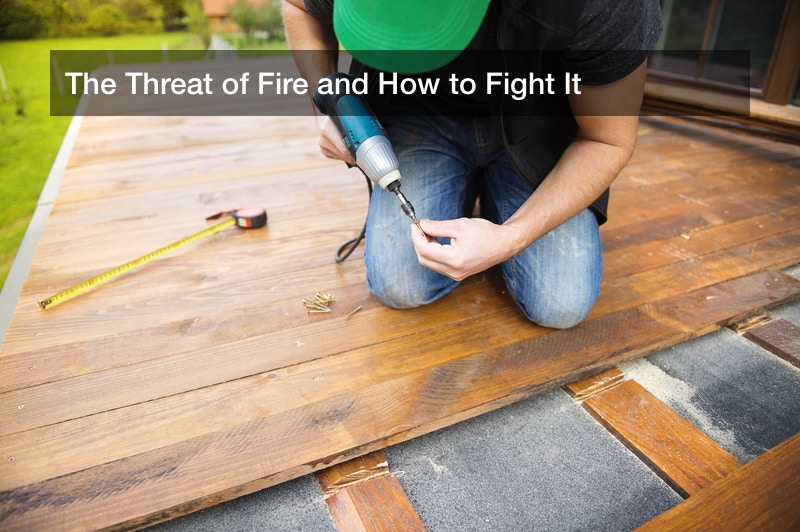The Threat of Fire and How to Fight It

A building may suffer from hazards due to the local geography or climate. A structure or neighborhood in a low-lying area may experience flooding after a heavy rain, while a building near a fault line (such as California’s San Andreas fault) may be rattled and damaged in the event of an earthquake. Homes in the Midwest may experience tornadoes and get buffeted and damaged by these storms’ strong winds, wind-blown debris, and hail. And buildings on the east coast, especially Florida, face the devastation of hurricanes every year. But fire is a universal hazard, no matter the local topography or weather, and today’s American buildings are always designed with fire safety in mind. Statistics show that plenty of fires star every year, and they threaten property and lives alike. So, modern fire sprinkler design companies may offer a fire sprinkler system designer to engineer a new set of sprinklers for a client company’s building, and a fire sprinkler system designer will know how to create effective automatic fire sprinkler designs with specialized software. Different types of fire suppression systems are in use today, and fire sprinkler system designers will know just how to craft them for maximum effect. What can a fire sprinkler system designer and contractors offer in the fight against fire?
When Fires Start
Nearly any building may catch fire, regardless of weather or geography, and it is often human activity or negligence that starts these blazes. In decades past, cigarette and cigar smoking was allowed in public buildings, but lit cigarettes could be dropped or misused, and lit tobacco could set carpets, drapes, paper, or clothes on fire and start a blaze. For this reason and others, smoking is prohibited in nearly all buildings today. But other hazards exist and should be taken seriously. Frayed electrical cords are a common culprit, when the protective plastic sheath is damaged and exposes the hot inner wires. Those wires may then start a fire if they touch papers, drapes, carpets, or other flammable materials, and even ordinary homes face this hazard. Meanwhile, in hospitals, damaged electrical devices are known to spit sparks that set curtains or bedding on fir. And of course, a dropped lighter or match might set a fire as well. Finally, there is the threat of arson, when a criminal intentionally sets a piece of property on fire.
Statistics show that hotels and motels, offices, and hospitals most often catch fire every year, and annually, some 15 people are killed and 150 are injured due to hotel and motel fires. Most often, it’s the smoke and lack of oxygen that can injure or kill someone, not necessarily the heat of the fire. Fortunately, the rate of warehouse fires has dropped considerably since the early 1980s, since warehouse fires are a minimal risk to human lives but can cause devastating property losses. To prevent fires like these and more, today’s fire sprinkler system designers are hard at work to create ever more effective sprinkler systems to contain fires as soon as they start.
What Fire Systems Can Do
Ultimately, any building of any size or function might catch on fire, so nearly all of them will have fire protection hardware installed in them, and that includes smoke detectors, alarms, and fire sprinkler heads, among others. An array of fire sprinkler heads will consist of many water-emitting metal heads found across the building, installed on all ceilings. These heads are numerous enough, and arranged correctly, so that they don’t have any blind spots, or else a fire might be able to grow out of control if it’s not douses right away. These heads are connected by wires to smoke detectors so that these automatic systems “know” when and where to activate, and water pipes will keep them supplied. Typically, sprinkler heads will spray water for a few minutes before their timer runs out (to save water). Sprinkler activation is localized, meaning that only the heads near a fire will activate. After all, active sprinklers in other rooms are wasting water. A public building owner is urged to have regular inspections done on their fire protection hardware to check for faulty or outdated hardware, and have the system repaired, updated, or expanded as needed.
